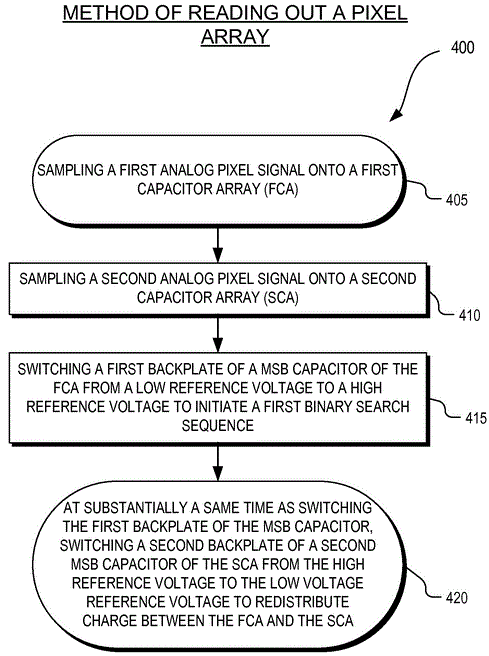The batch of patent applications is supposed to speedup the image sensor readouts or solve the problems with slow readouts.
First, Sony patent application US20140160334 "Image pickup device, control method, and image pickup apparatus" by Hayato Wakabayashi proposes to read 4 rows simultaneously, while keeping a smooth progression of the rolling shutter:
The ramp DACs 142 and 152 work with a delay to have a smooth shutter curtain advance:
Omnivision application US20140183333 "Conversion circuitry for reducing pixel array readout time" by Robert Johansson proposes to alternate the readout signal polarity in even and odd columns:
The successive approximation ADC cycle starts from switching the cap array reference to an opposite one. Having the input inversion allows even and odd column ADCs use the opposite polarity references, and thus reduce the reference load and speed up the conversion: "Conventional image sensors are not configured to have conversion circuitry with SAR ADCs having capacitors that charge to opposite voltage references. In some conventional image sensors, all of the SAR ADCs in the conversion circuitry are all the same and the capacitors arrays charge to the same voltage reference. This can cause longer settling times for voltage reference because the capacitor arrays inside the SAR ADCs all tax the same voltage reference (at around the same time) by drawing charge from the voltage reference during the SAR ADC's binary search sequence."
Once we talk about the high speed shooting and necessity to reduce the rolling shutter distortions, Anyony Cog brought to my attention Samsung patent application US20130188069 "Methods and apparatuses for rectifying rolling shutter effect" by Omry Sendik, German Voronov, and Michael Slutsky. The application is said to have an unusually detailed description of the compensating algorithm. Not to go too much into the algorithmic details, below is a general structure of the proposed solution:







No comments:
Post a Comment